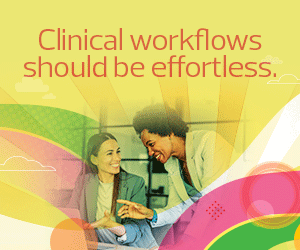What Is Application and Service Rationalization?
For healthcare IT teams, service and application rationalization is a strategic process focused on eliminating or replacing inefficient and outdated tools and consolidating redundancies.
One goal is to avoid wasting money on technologies that no longer serve the organization. Another is to ensure clinicians have the most optimized tools available for better delivery of care.
“Rationalization is important because, without it, we’d find ourselves hamstrung by the cost and inefficiencies of our legacy solutions,” says Healthcare Outcomes Performance Company (HOPCo) CTO Bryan Bearden. “We need to be free of those to maximize the opportunity presented by newer digital assets that exist today.”
How Health IT Leaders Determine Which Services and Apps to Remove
When deciding which services and applications should go or stay, it's important to understand a healthcare organization’s current technology. “By knowing your whole ecosystem of technology,” DeVries says, IT leaders can better analyze whether tools are still useful.
“New AI tools need to be fed off of a graph or vector to understand prompts,” DeVries notes. “If your organization has an existing program with a vector database, that may be sufficient, so you don’t need to buy the latest and greatest thing.”
Mergers and acquisitions are a “built-in opportunity” for rationalization, Bearden says. “It’s not financially responsible for us to manage the overhead of multiple solutions that all do the same thing.”
When HOPCo acquires practices, he says, “We move them to our customized electronic health record, sunset old email solutions, and bring them into deals we’ve already negotiated volume discounts on.”
Bearden adds that IT leaders must also be willing to let go of existing systems if there is a stronger alternative. He says HOPCo recently decided to replace a patient-reported outcomes solution they had built in-house because they acquired a startup company with a more robust patient engagement platform.
“The old solution was fine, but this one will help us solve a richer set of needs,” says Bearden, explaining that in addition to gathering and analyzing PROs, the new system also enrolls patients onto clinical care pathways. “In situations where other tools meet some of those needs, we’ll replace them with this new platform.”
DISCOVER: What is digital health and how is it evolving?
Ways to Approach Service and App Rationalization in Healthcare
DeVries recommends phasing out on-premises service and application tools in favor of cloud-based solutions because they are easier to update and replace. “You can change things in the cloud a lot easier than when it’s an installed product,” he says.
It’s also important to focus on simplifying IT management. “Automating system updates reduces device management costs, which optimizes IT administration,” says Jenn Roth, director of global product marketing healthcare at Microsoft.












